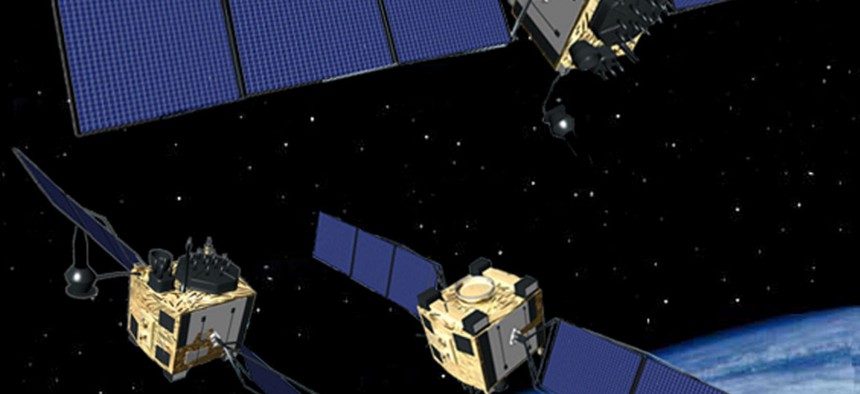High anxiety: US needs resilient satellites, nets to avoid a space crisis
A new assessment highlights the potential for an instability crisis in space as the United States and China vie for the high ground.
Information superiority and the resilient space platforms that increasingly distribute vital intelligence in real time are intertwined national security issues as China challenges the U.S. military for dominance of the high ground.
The vulnerability of space assets has prompted a reevaluation of how Chinese advances in space have shifted the incentives for either side to launch a pre-emptive first strike in a crisis. The latest assessment comes from the Johns Hopkins University's School of Advanced International Studies.
In a new study, the school's Foreign Policy Institute warns that the "United States and a space-capable potential adversary such as China would likely face an unstable, high-stakes environment that is neither familiar nor well understood."
The assessment stresses that the People's Liberation Army (PLA) now views the ability to exploit information as a "potentially decisive factor in future conflicts" along with the corresponding requirement to knock out an adversaries' space-based information platforms.
"The PLA considers space to play an important role in rapid collection, accumulation, and transmission of information," the report noted. "China’s military emphasizes the importance of planning 'key point strikes,' which typically include an opponent’s [C4ISR] infrastructure, where space plays an important role."
The study also reiterates that Chinese anti-satellite (ASAT) weapons tests seek to exploit current U.S. space vulnerabilities. "The PLA’s goal in space conflict would likely be to fight quick wars with quick resolutions, giving it major incentives to strike first when conflict seems inevitable," the Johns Hopkins study warns.
In response to Chinese and Russian anti-satellite testing, the U.S. Air Force is investigating ways to harden future satellites as well as providing maneuvering capabilities to counter ASAT threats. In an attempt to avoid potentially disastrous debris fields in low-Earth orbit, the service is also investigating laser weapons that could be used to blind enemy satellites. These optical systems would replace traditional kinetic weapons, thereby reducing the threat to U.S. space assets.
Other options include fielding networks of smaller, redundant and less expensive communications, relay and surveillance satellites. These "disaggregated" space assets would make less tempting targets in a conflict where real-time data would be critical. The ability to deploy resilient space architectures "would mark a major step forward in promoting crisis stability in space, discouraging first-strike attacks in space," the report said.
Ground-based C4ISR networks are another option as the cost of spy, communications and secure navigation satellites soars.
"What is important is not the space assets themselves, but rather the capability they provide," the Johns Hopkins study noted. "If the United States can field more survivable space assets, both in orbit and on the earth, a potential space offense would appear less threatening than it does to today’s more vulnerable U.S. space architecture.
"Similarly, a survivable space offense capability is more stabilizing than a vulnerable one," the researchers added.
NEXT STORY: Air Force moves ahead with GPS III preparations




